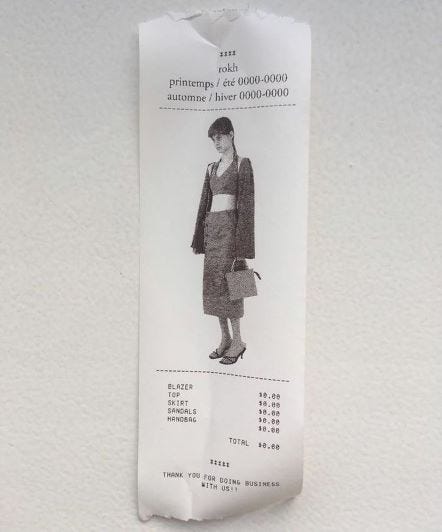Coercive consumption and accelerated commodification in the fashion industry
far as the different expressions of consumerism are concerned, clothes have always had elements of exploitation sewn into them. It is not new to say that fashion has fragmented itself into the stream of late-stage capitalism. What’s interesting about this process of fragmentation, however, is what it suggests about coercion as an integral aspect of fashion consumption.
With the birth of the accelerated commodity, capitalism has entirely inaugurated the spheres of style and social capital, and as the culture of clothing further equalizes itself into the avenues of commodity and consumerism, the self-expression of an entire culture has slouched into a shopping addiction. The life cycle of the 21st-century garment can be expressed as follows.
Birthed inside hubs of exploitation, the garment immediately enters the arena of accelerated commodity production, where it is weighed up against all other commodities in lieu of how much capital it can generate. Once weighed up, it’s onto the shelves, where it must rely on consumerist clamor to keep it alive. Often, the garment’s life is cut short when its value is reduced to an uninteresting ‘microtrend,’ no longer fashionable in the eyes of the mindless consumer base.
Cloaked by excess consumerism, the cultural value of clothes has deeply diminished. In acknowledging this, it becomes easy to assume that fashion has developed a lack of directionless. This is not necessarily true. In the constant flux of excess, it would be impossible for any commodity to be truly directionless. Rather, fashion’s purpose has been redirected by the capitalist incentive to valerate and coerce the consumer into an accelerated state of consumption.
Nowhere is this accelerated commodity applauded more than high streets and online shopping platforms which act as mini arenas for the capitalist class to maintain their monopoly over the masses. Shelves and sites are stocked with garment after garment, all produced to marry the consumer’s emotional satisfaction with the act of mindless consumption. The clothes that adorn the shelves and digital shopping centers today articulate the ambivalence of contemporary consumer culture.
Commodity accumulation is the primary way to visualize our successes under capitalism.
Coercion has to be a crucial aspect of the consumption cycle because capitalism has eroded our ability to accurately self-actualize through authentic style. Commodity accumulation is the primary way to visualize our successes under capitalism. So, naturally, we are coerced into consumerism, being sold that our self-satisfaction, empowerment, and authenticity are attached to whichever style of garment is currently trending. It is, then, in our nature to scaffold our identity around our devotion to certain styles and brands and our aversion to others.
Bywrapping up the social character of clothing under the cloak of capitalism, even self-expression has been converted into a reflection of dominant power structures. For example, with the emerging popularity in the ARKET, COS, and GANNI styles of fashion, consumers can pride themselves on the quiet luxury of their loud logos, and, similarly, the predominantly Vintage Apparel, Carhartt, Patagonia consumers can affirm their sense of self-expression based on ‘type of person’ associated with that sporty sense of luxury.
Debords heavily referenced The Society of the Spectacle can be of help here. The spectacle, according to the French thinker,
“… is a permanent opium war that aims to make people identify goods with commodities and satisfaction.”
(1995, p44)
That formulation seems particularly applicable in this late stage of consumerism that we inhabit. As a culture, we have all been shepherded toward shopping addictions, and by marrying our self-expression with the brands we wear, it has become increasingly difficult to garner our garments with a completely unique sense of style. Instead, everything we wear is a slight representation of someone else, who is a slight representation of someone else, representing something different, which all returns back to a brand’s image of the same similar style of goods.
Naturally, clothing expresses a certain standardized sameness. At school, in the office, at parties, etc., there can only be so many styles of clothing one can wear. But as the spirit of late-stage capitalism further dilutes the cultural framing of the fashion industry Adorno’s reflections on the decline of culture seem more apt than ever,
‘‘The sacrifice of individuality which accommodates itself to the regularity of doing what everybody does, follows from the basic fact that the same thing is offered to everybody in the standardised production of consumption goods.” (1991, pp.40)
As said at the start, the clothing culture has equalized itself into the avenues of commodity and consumerism. Because of this, this standardized production of goods will most likely only intensify and the structural integrity of the fashion industry (which has always been dubious) has been permanently mutated by modern-day material excess.
The social and cultural significance of clothing seems to be quickly diminishing and now fashion feels best consumed as a sociological tool that signifies the slow slouch towards coercive consumption.

